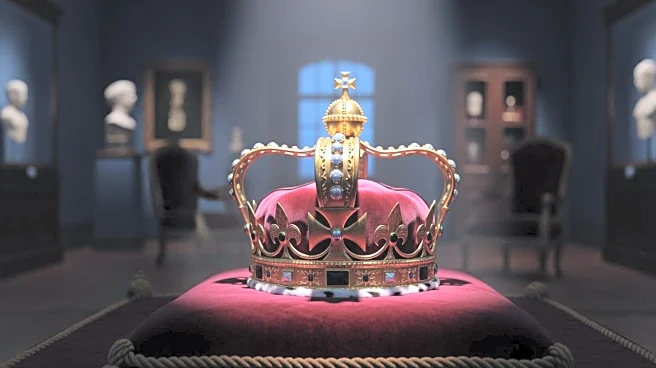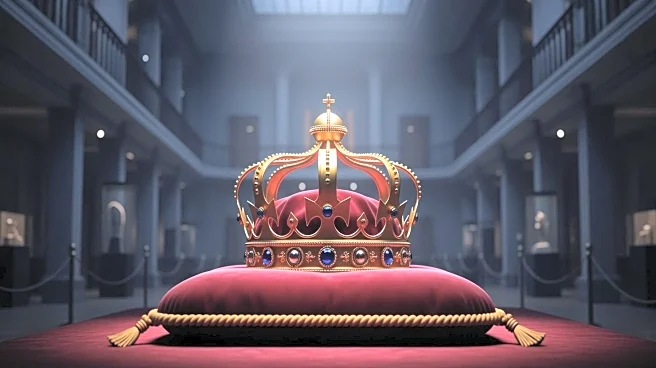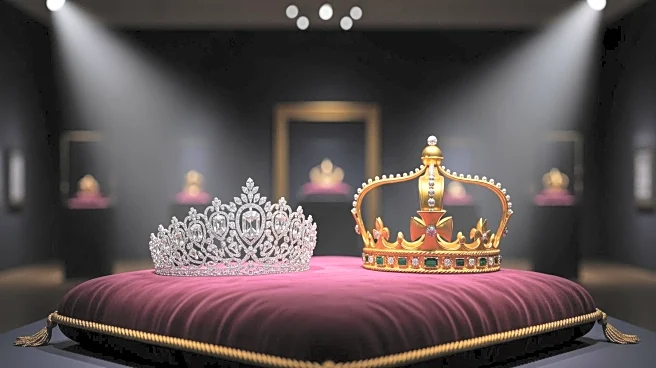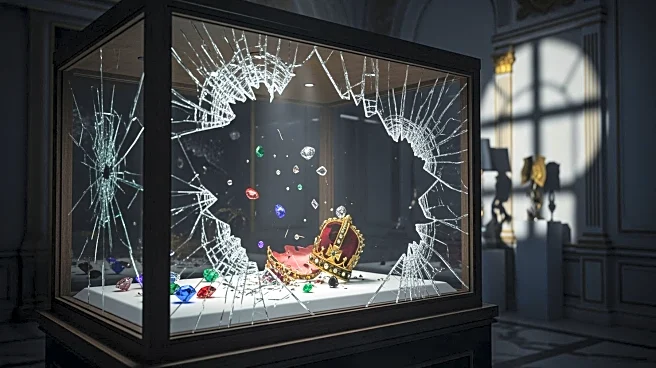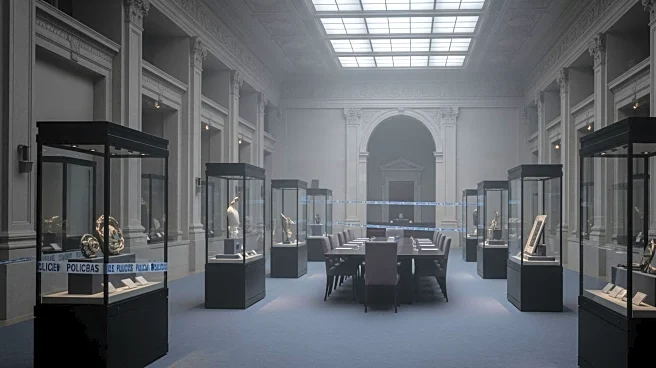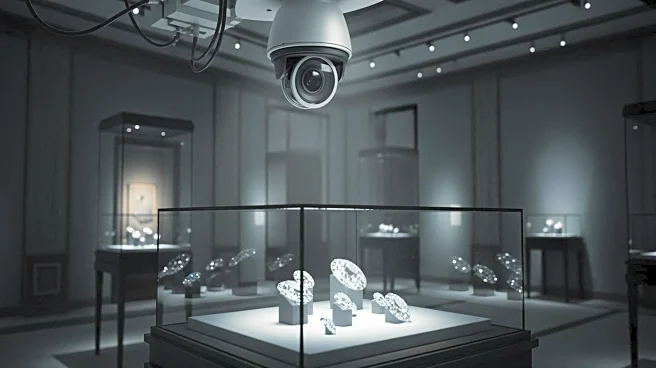What's Happening?
In a bold and meticulously planned heist, thieves have stolen eight pieces of jewelry from the Louvre Museum in Paris, described by officials as having 'incalculable' value. The robbery took place in the museum's
Apollo Gallery, which houses France's historic collection of crown jewels. Among the stolen items were royal tiaras, necklaces, and earrings. The thieves attempted to steal the crown of Empress Eugénie, which is adorned with gold eagles, diamonds, rose-cut diamonds, and emeralds, but abandoned it when guards interrupted the raid.
Why It's Important?
The theft of such significant historical artifacts from the Louvre Museum represents a major loss to cultural heritage and raises concerns about security at one of the world's most renowned museums. The stolen items are not only valuable in monetary terms but also hold immense historical significance, being part of France's royal legacy. This incident could lead to increased security measures at museums globally and highlights the ongoing threat of art and artifact theft, which can impact cultural institutions and their ability to preserve history.
What's Next?
Authorities are likely to intensify efforts to recover the stolen items and apprehend the perpetrators. The Louvre Museum may review and enhance its security protocols to prevent future incidents. The international art community will be closely monitoring the situation, as stolen artifacts often resurface in illegal markets. There may also be increased collaboration between museums and law enforcement agencies to safeguard cultural treasures.
Beyond the Headlines
The heist underscores the ethical and legal challenges in protecting cultural heritage. It raises questions about the adequacy of current security measures in museums and the role of international cooperation in preventing art theft. The incident may prompt discussions on the balance between public access to cultural artifacts and their protection.
